Simple
Standard
Custom
Simple

One-Sided Panel
One-Sided Panels are machined in arrays from plastic sheet-stock measuring 1/16 to 1/2″ in thickness. All features are on one side and typical applications include instrument panels, service covers and safety guards or windows. Commonly used materials are ABS, PC-ABS, clear PC or Acrylic and aluminum composite materials (ACM). We can digitally print on these parts with wear-resistant UV-cured inks to provide labeling, logos or other markings. Other uses are mounting boards with pilot holes or threaded inserts to hold PCBs or other electrical/pneumatic components.
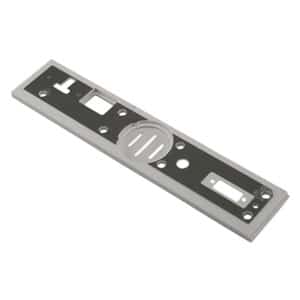
Two-Sided Panel
Two-Sided Panels are machined in the same fashion, only that a secondary machining operation allows for features to be machined on both sides. These often include blind holes and recessed cutouts to mount switches and dials. Typical applications include control and switch panels, vehicle and boat consoles, alarm and building management systems. Commonly used materials are PC-ABS, clear PC or Acrylic and aluminum composite materials (ACM). We can digitally print on these plastic panels with wear-resistant UV-cured inks to provide labeling, logos or other markings.
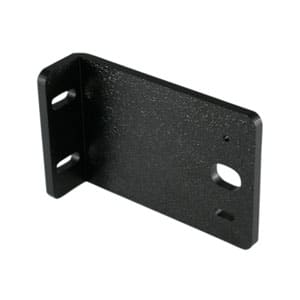
L-Shaped Bracket
L-Shaped Brackets are machined as flats and then folded by thermo-line bending them to the desired angles. They are often a lighter and more cost-effective alternative to metal brackets and don’t require a coating to prevent corrosion. Common uses are light, antenna and sensor mounts which often require a non-metallic material. Larger L-shaped parts are often used as clear safety hoods or sneeze guards. Other applications include tool holders, mounting clips and holsters. Commonly used materials are PC-ABS, clear PC or Acrylic and ABS-PVC (Kydex).
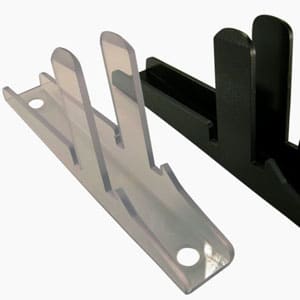
U-Shaped Profile
U-Shaped Profiles are machined as flats and then folded by thermo-line bending them to the desired shapes. Common uses are wire, tube, conduit, terminal block and bus bar covers that are electrical insulators to provide touch protection. Larger U-shaped parts are often used to make clear tunnels for the protection of conveyor and transfer belts in the food and pharmaceutical industries. Other uses are material chutes and bumpers made from softer materials to reduce wear and noise for example in coin sorting machines. Commonly materials are ABS, HDPE and clear PC.
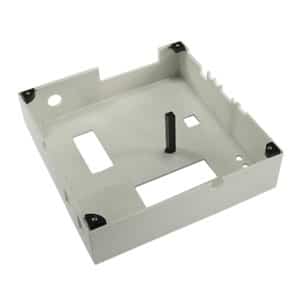
5-Sided Tray
5-Sided Trays are usually made by capping a U-shaped profile. Common uses are drip, lab and condensation trays. Smaller trays can be used for potting electrical components. On the other end of the size range are large hoods to cover and protect outdoor valves, motors and sensors. Antenna and radome covers are made using polymers that are transparent to the frequencies in use. Larger hoods can also be used for cladding carts that carry diagnostic or medical devices. Commonly used materials are ABS, PC-ABS and clear PC.
Standard
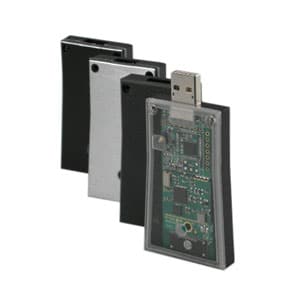
Sandwich Low-Profile Cases
Sandwich Low-Profile Cases consist of 2 halves machined from sheet-stock that is slightly thicker than half the thickness of the finished case. The cavity for the internal components is hogged out first before the CNC machine cuts the case perimeter. If needed, one or more frames can be fitted between the top and bottom layer to create a greater internal volume. Cases made in this fashion are extremely strong and are are often used to make rugged connector cases. Wands and sleeves for PCB antennas can also be made this way. Thick ABS sheet is the most common material
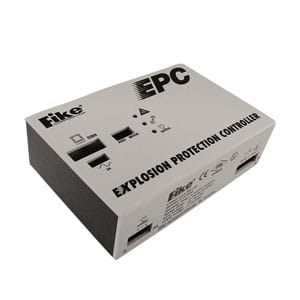
2-U Clamshell Housing
2-U Clamshell Housings consist of 2 U-shaped halves that either snap together (ideal for small enclosures) or that are held together by flat-head screws that are flush with the case. This is the simplest and most cost-effective way to create custom housings ranging from match-box to shoe-box in size. An added advantage is that the top and 2 sides can be printed on in one setup prior to forming the part. Typical uses include industrial controllers, transformers, transmitters, hubs and the like. ABS and PC-ABS are the preferred materials for these custom enclosures.
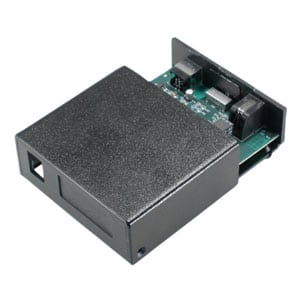
Slide-In Chassis Housing
Slide-In Chassis Housings consist of a 4-sided cover and an L-shaped slide-in chassis. This is ideal for circuit boards with protruding connectors on opposing sides because the PCB can be easily mounted to the chassis which is then slid into the 4-sided cover. Keyways minimize the need for fasteners and in many cases only a single flush-mount screw is needed to securely lock the 2 parts together. This is the most assembly-friendly solution for single PCB plastic housings. ABS and PC-ABS are the preferred materials for these custom enclosures.
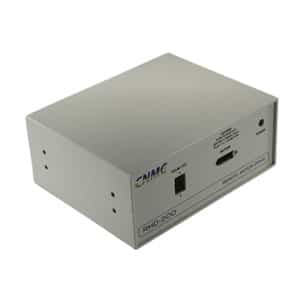
Removable Front & Back Cases
Removable Front & Back Instrument Cases consist of a U-shaped top and bottom piece that capture and overlap the front and back panel. Because top and bottom are held together by internal side panels this 6-part design is extremely strong and does not rely on any solvent welds. Since all panels are removable this type of plastic enclosure is ideal for diagnostic devices that require frequent service. It compares favorably with cases made from extruded aluminum offering better access and more customization options. ABS and PC-ABS are the preferred materials.

Table-Top Register and Kiosk
Table-Top Registers and Kiosks consist of a multi-bend main face which is capped by side panels. Bends can go both ways – inward and outward which allows for a multitude of contours for table-top housings made from plastic that require surfaces at different angles for displays, keyboards, touch pads or card readers. Its larger version is often deployed as a freestanding kiosk. Typical uses are check-in devices, lobby equipment, entry gate and ticketing kiosks. ABS, PC-ABS and for large units E-PVC are the preferred materials for these custom enclosures.
Custom

Technical Part
Technical Parts are usually internal and designed for a specific function. Common technical plastic parts are mounting clips and brackets, spacers and shims, insulation blocks and posts, etc. These usually require tighter tolerances than covers or housings and typical uses include tool and specimen holders, tube and cable management clips, low friction washers and pads, electrical insulators, guides and bushings, spacers and dampers. Materials used are ABS, PC-ABS, PC, PVC-ABS, HDPE, UHMW, Acetal (Delrin), PA (Nylon) and others.
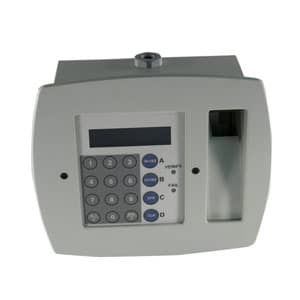
Outdoor Enclosure
Outdoor Enclosure are either sealed with gaskets or designed in such a way that parting lines are not exposed to rain or spray. Overhangs, recesses and drains protect screens and keypads from the elements while a bottom mounted panel allows for easy access without compromising weather-resistance. The use of digitally printed UV-cured inks allows for markings and logos that won’t wear or fade outdoors. Typical uses include security systems, traffic monitoring, environmental data collection, transmitters and repeaters. ABS and PC-ABS are commonly used.

Clear and Translucent Parts
Clear and Translucent Parts are usually windows or lenses employed to protect displays, camera lenses, photocells and lasers. Digital printing can be used to black out or shade areas as needed while selectively maintaining transparency. LED lighting and indicators often require frosted, tinted or colored diffusers to more evenly spread the light. Another use is emergency switch covers and panels with CNC machined break lines that protect switch gear, equipment or first-aid items. Cast and extruded Acrylic, PC, PETG and PVC are the preferred materials.

Modular Enclosure
Modular Enclosures are meant to allow for different configurations of a product or product-family. This means that different modules can be combined in various ways by sharing some kind of interlock. Examples include snap-on battery packs, transmitters, range extenders, etc. In many cases the objective includes branding, meaning that all components of a system share a distinctive look and feel. Shared printed features like graphics and logos can be used to further enhance the branding. ABS and PC-ABS are the preferred materials for these kind of modular systems.
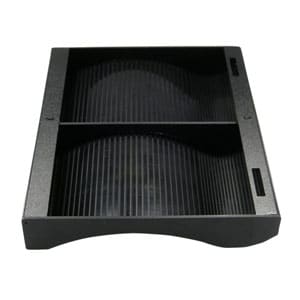
Complex Geometry
Complex Geometries are pushing the boundaries of ClickFold’s Zero-Tooling process. The nature of a “folding” process is that compound curves are not possible, but often they can be approximated by a combination of simpler shapes. Graphics can also help to give a part the appearance of an organic shape while keeping the actual geometry simple. CNC machined slot-patterns allow these areas to be shaped in the assembly process. This means convex and concave curvatures can be done without the need for molds or fixtures. ABS and PC-ABS work best.
